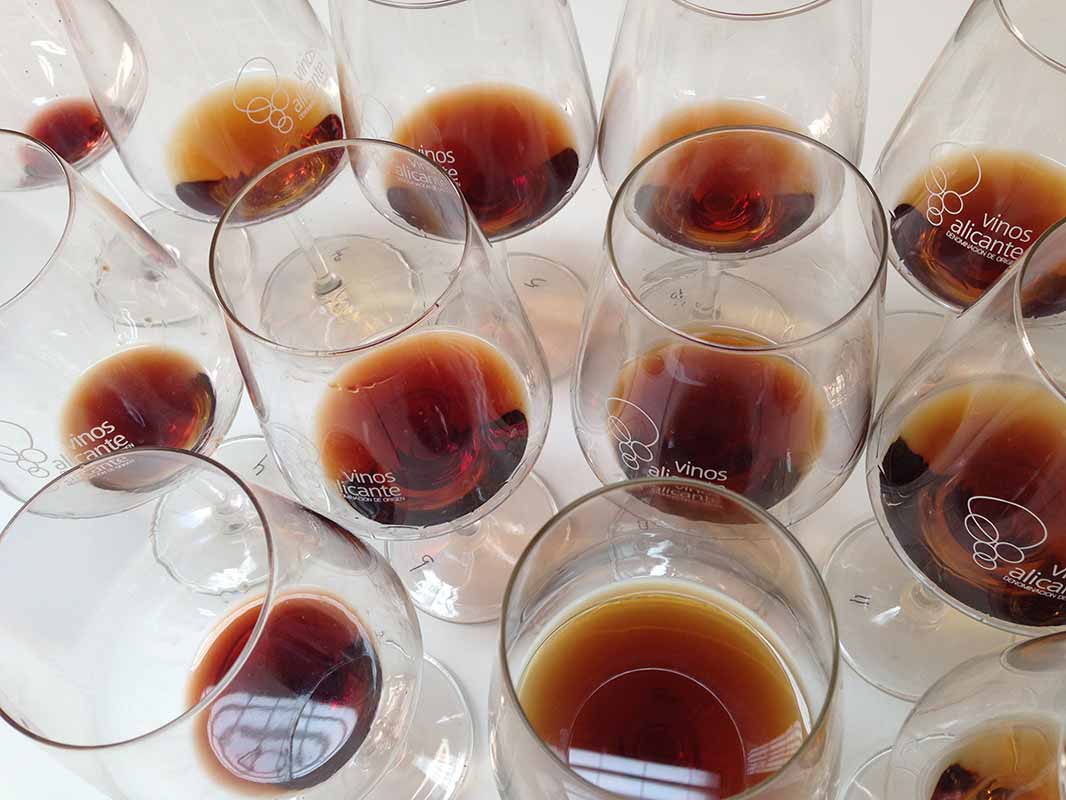
Fondillón Alicante DOP: From yesterday to tomorrow
02 Jul 2015 Fondillón Alicante DOP: From yesterday to tomorrow
In recent years, Fondillón Alicantino has been enjoying a resurgence among wine professionals, which has made it more attractive and highlighted its many virtues.
Some of the main characteristics of this product are:
- It is made from 100% Monastrell
- It contains no added alcohol. All the alcohol comes from the grapes themselves. In spite of the years. In spite of its age. It is Monastrell’s advanced age that makes this possible.
- It is difficult to describe its sensory qualities: somewhere between dry with touches of sweetness in some cases. The quality that is so difficult to pinpoint is what makes it such a delight to pair with foods.
This wine has a great history and is closely linked with the city of Alicante. But what really stands out is the work of the wineries that have worked to salvage this product and have enabled it to survive to present times. Small family wineries, traditional consumption and minimal, vocational production are what make it possible to enjoy this “oenological rarity” which would have been lost had it been exposed to commercial trends and international business groups.
[su_slider source=”media: 5831,5835,5830,5834,5833,5832″ link=”image” height=”400″ title=”no” pages=”no” speed=”400″]
On the way, some great personalities from certain bodies have had an extremely important role, rewarding some winemakers for not abandoning the product, or buying dwindling wineries to resume wine production. This small number of praiseworthy individuals would one day be appointed by the Regulatory Council of Alicante to continue with the vast history of Fondillón.
Most importantly of all is that fondillóns are now in some wineries, which have managed to update their products to offer higher quality.
- Primitivo Quiles: A Mònover family that championed this product, defending it tooth and nail. Its “Solera de 1948”, which is on the market, is produced in the province’s oldest winery in heritage casks whose size and types of wood are the keys to manufacturing this product.
- Brotons, vinos y aceites: two products emerge from the silence of its cellars: the 1964 and the 1970, with their subtle sensorial differences. They are bottled in smaller formats than 0.75 and some are custom bottled. The bottle has been redesigned for a more modern image.
- Cooperativa Las Virtudes de Villena: the work done to recover the old soleras in the area is commendable. In 1972 they bought wines from different wineries, some with 22º alcohol, and started creating and perfecting these “pure bloods”. In the same premises where they worked back in 1972 and under the name “Tesoro de Villena” the winery does its utmost to restore the great casks in its cellar.
- Cooperativa de La Algueña: like the above, it used grapes from the La Algueña- Pinoso- La Romana area to launch a “1980” solera on the market. With distinguished aromatic differences, it offers a touch of sweetness and toasted orange.
- Cooperativa del Mañán: the bottle containing “Gran Fondillón solera de 1982” pays tribute to the boats that carried products from Alicante, giving international fame to our land. It has a truly classical profile. A Fondillón with great aroma and strength and a touch of dried fruits and aged wood. The product is the result of several land mergers and families in the same area and production is very limited.
- Bodegas Alejandro: Alejandro Pérez’s father was the driving force behind this project. He bought very old products from a number of wineries in Monóvar, La Romaneta, and even Novelda. In the seventies he started storing products and filling old casks with the solera method, an arduous task for which he took personal responsibility. This rich heritage of wood was kept in the cellar in Mañán, and although this product is the most difficult to see, it is still here.
- Francisco Gomez: In spite of the modern facilities, the winery has revealed its close links to its origins by including a Fondillón in its catalogue. With the 1972 solera, it has been labelled “Quo Vadis” with a powerful nose and dry mouth, toasted, silky and leathery. Giant casks have been selected with painstaking care (from 500-1,000 litres) to give an air of new wood to the product. The presentation is spectacular with its transparent bottle covered with crystals, which show off its characteristic mature colour.
- Bocopa: like the others, Bocopa fondillón is an example of a new attempt to keep a product alive by rescuing and revamping something from the past. Bocopa focuses on quality, selecting overripe grapes like the wine producers of Onil in days gone by. It is based on the Fondillón from the Cooperative in Petrer, where there are numerous old casks. Taken to its facilities and in new packaging, two selections have been created: a “1970” selection of which few bottles are available, and another, very small selection of 1987. Both marketed under the “Alone” brand.
The Regulatory Council protects and controls the new stage of history of these products which are duly certified by it. The Council has also been analysing new opportunities for years, twinning production and seeking to create a heritage for the future for this product (through new production handbooks, defining soleras, improving the tasting definition, etc.). What is currently most valuable is that there are two generations of winemakers working to produce and defend this product. So there will be Fondillones in the future.
In a recent interview in Alicante with Sarah Janes Evans (one of the most prestigious Masters of Wine and a contributor to British publication Decanter) she highlighted that “the charm lies in the secret”, although this “sommeliers’ wine’s” persistence, age and pairing options all make it tremendously attractive.
